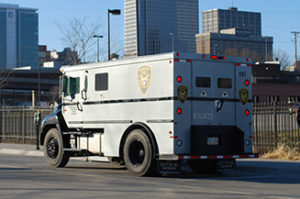 These days there is a lot for banks to consider as they move forward. In addition to implementing tactics like employee health-screenings and appointment-based banking that keep employees and customers safe, banks also need to consider how, where and when to reach customers both today and post-pandemic. A strong partnership with a cash-in-transit (CIT) carrier is at the very core of a financial institution (FI) successfully navigating the now while also making long-term, post-pandemic changes.
These days there is a lot for banks to consider as they move forward. In addition to implementing tactics like employee health-screenings and appointment-based banking that keep employees and customers safe, banks also need to consider how, where and when to reach customers both today and post-pandemic. A strong partnership with a cash-in-transit (CIT) carrier is at the very core of a financial institution (FI) successfully navigating the now while also making long-term, post-pandemic changes.
Navigating the now
According to an ATMmarketplace.com article, Ready, Set, Open?, one of the biggest takeaways of the pandemic has been accessibility. “Banking is an essential service,” the article stated. “We’ve seen a drive to create new and flexible solutions and services to ensure customers have access to what they need when they need it.”
In other words, consumers want choice. This may very well involve new mobile options, but certainly also includes accessing cash at both banks and ATMs. Many FIs are discovering innovative and unique ways to upgrade these experiences. ITMs and contactless ATMs both provide customers with a service they have come to rely on, but in a different way.
At the core of these types of changes, is having a CIT carrier that is diligently working behind the scenes to ensure that the bank has what it needs – properly prepared currency and coin, securely delivered to the appropriate branch or ATM – when it needs it.
One of the benefits of a strong CIT partnership is that a FI can shift resources and focus to better serving its customer. In the current environment, this has never been more important. Bank personnel need to be able to focus on serving customers well today as well as carving out the space to think about how to better serve them in the future.
Long-term changes
When a FI has a solid partnership with a CIT carrier it knows the essential banking services it offers are being supported. Knowing that the CIT is doing its job well allows the FI to move toward thinking about post-pandemic operations.
In Get Out Your Roadmap! Finding the Best Way to Balance Digital and Traditional Banking, an August ATMmarketplace.com article, the suggestion is for FIs to develop a clear idea of where they are and where they are going. “If a FI has a good plan and a strong road map, chances are they will find the right balance and technology to move forward.”
In Rochester’s experience, it’s critical that a bank not only has the right plan and technology, but the right partner to support those plans and technology. As a bank alters and adds services, it’s crucial that its CIT partner be part of that conversation. In many cases, the CIT partner can offer ideas and solutions that increase efficiencies and reduce risk.
Even more importantly, a FI must carefully consider how their CIT partner can support or, even better, enhance their business continuity plans in emergencies or unforeseen circumstances. An example of this may be working with your CIT partner to outsource cash vault management. Banks that outsource their cash preparation and processing to a CIT automatically enhance their business continuity plans, adding a layer of protection and peace of mind. Essentially if a CIT handles a bank’s cash vault management, a bank can close the branch without impacting the customer’s access to ATMs at all. The CIT has it covered, prepping the cash for the ATM, delivering it, loading it, and processing it.
Optimize the partnership
As a FI plans for the future it should include optimizing its CIT partnership. The first step is to ensure that its current CIT carrier can support its changes and then review other available services.
Rochester Armored Car is constantly reviewing ways it can help current customers streamline services and simplify day-to-day operations. A thorough review of what services a CIT carrier offers can provide solutions for FIs that may never have been considered. Those solutions can help the FI free up valuable time and resources and shape how it moves forward.
